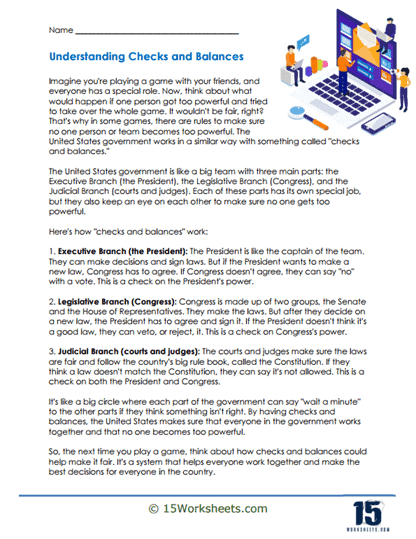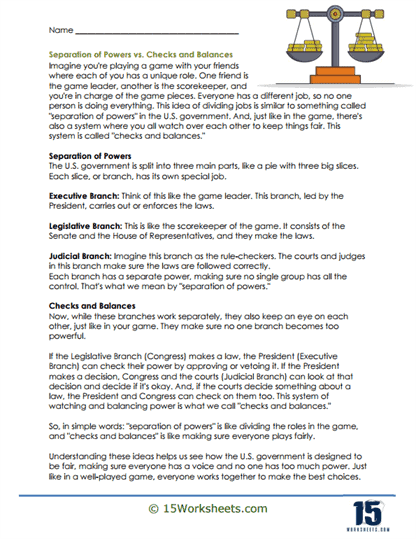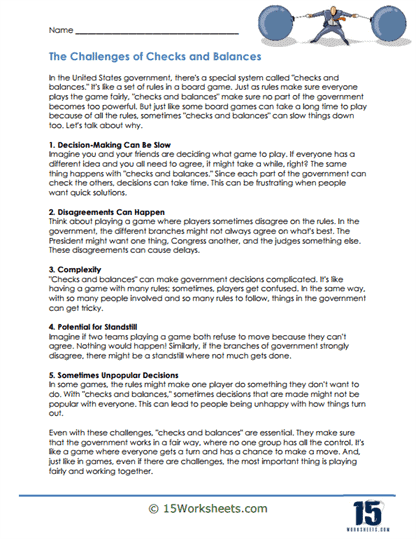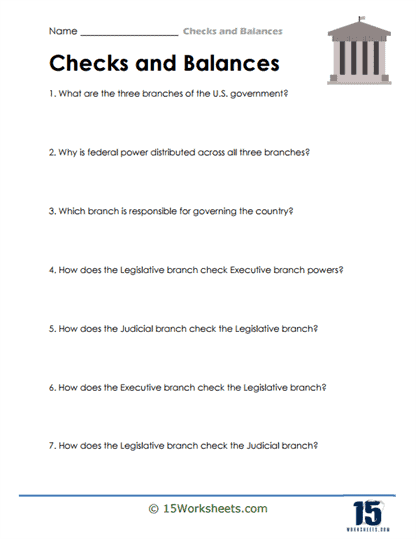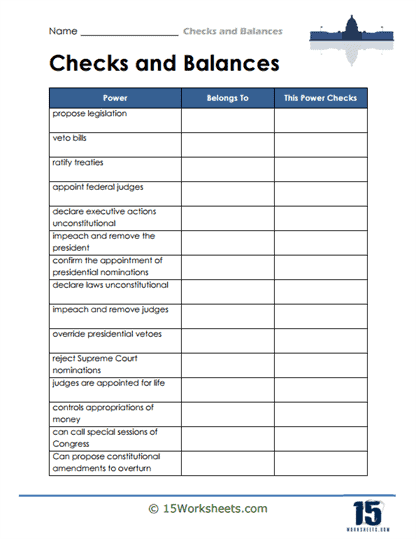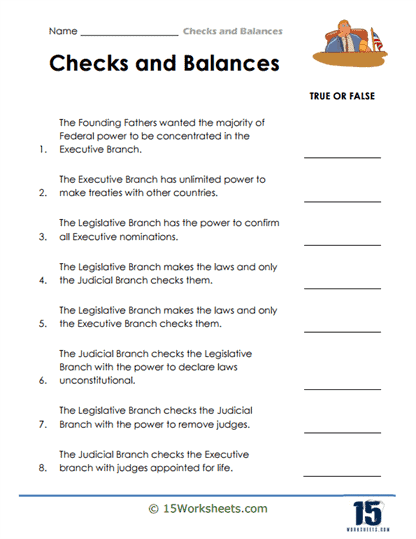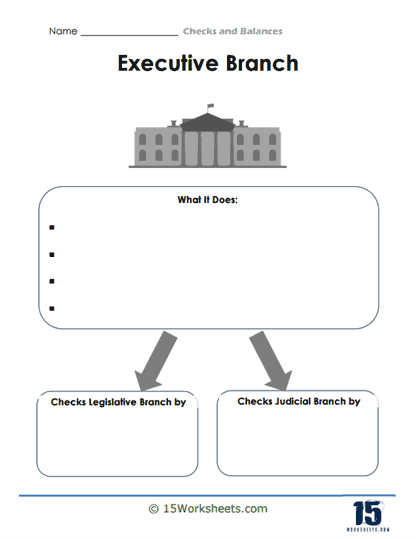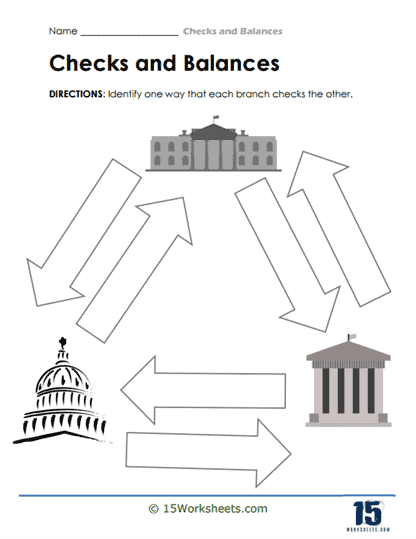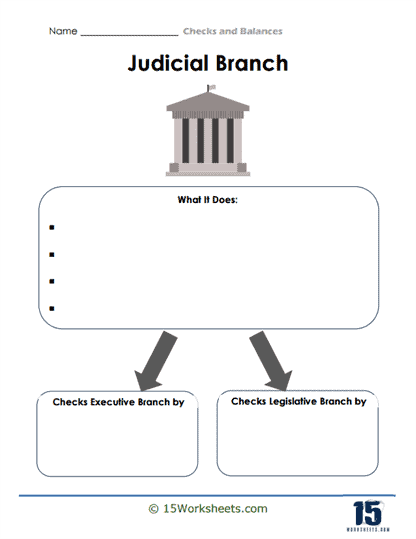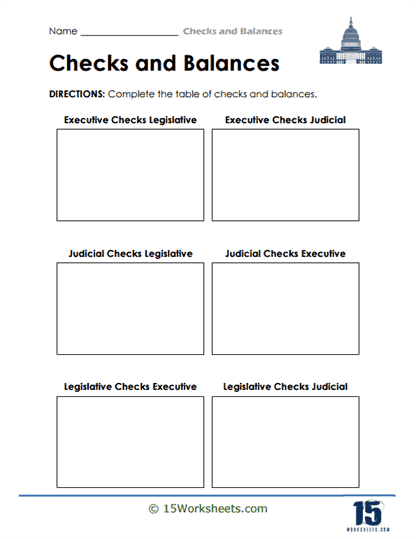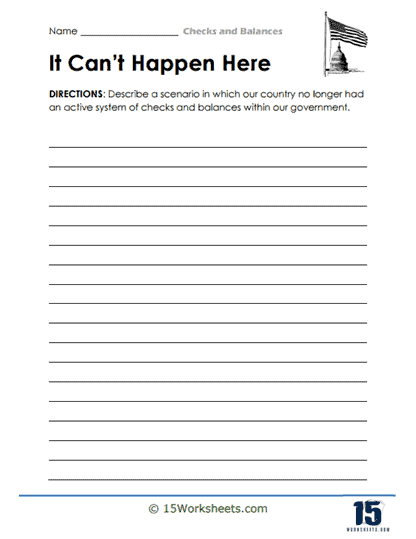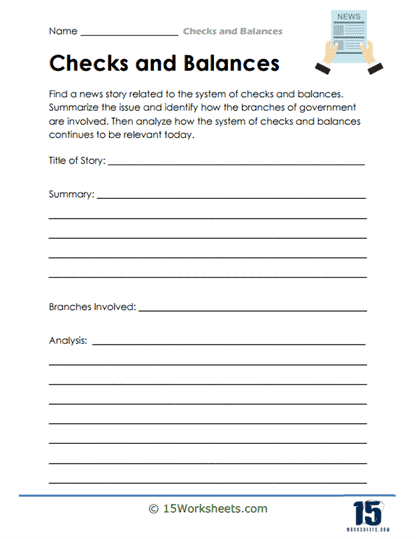Checks and Balances Worksheets
About These 15 Worksheets
Theses worksheets help students embrace the notion of “Checks and Balances” as bein a cornerstone of democratic governance, especially prominent in the structure of the United States government. Rooted in the fear of absolute power and the potential for tyranny, this system ensures that no single branch of government can act without oversight or unchecked authority. By distributing power and creating mechanisms of mutual oversight, checks and balances bolster the integrity and resilience of democratic systems.
Checks and balances refer to the system where different branches of government possess the ability to oversee and, if necessary, counteract the operations and power of the other branches. The aim is to prevent the concentration of power in one branch and ensure that decisions made within the government are collaborative and reflective of broader democratic principles. In the U.S., this system operates across the three branches: the Legislative (Congress), the Executive (President), and the Judicial (Supreme Court).
Types of Exercises On The Worksheets
Scenario-Based Questions – Students might be presented with hypothetical situations where one branch of government attempts to overreach its authority. They would then identify which branch can provide a check and how. Visual aids can effectively depict how power is distributed and checked among branches. Students might be asked to complete or label diagrams that illustrate these relationships.
True/False and Multiple Choice Questions – Testing foundational knowledge, these could focus on understanding the specific powers and checks inherent to each branch. Given a list of actions or powers (e.g., vetoing a bill, declaring a law unconstitutional), students would match each to the branch that exercises it and the branch that can check it.
Role-playing and Simulations – Students might simulate Congressional sessions, presidential decision-making, or court hearings to understand how checks and balances play out in real scenarios. Real-life instances, such as presidential vetoes being overridden by Congress or court decisions impacting executive actions, can illuminate the practical workings of checks and balances. Students might discuss the historical origins of checks and balances, its significance in preventing tyranny, or instances when they believe the system either succeeded or failed.
Comparative Analysis – Comparing the U.S. system with other countries’ governance structures can offer perspectives on different ways to distribute and check power. Topics like the balance of power over time, instances of perceived overreach, or the effectiveness of checks and balances can provoke insightful discussions and debates.
The Value of These Worksheets For Students
An understanding of checks and balances reinforces core democratic values, ensuring power remains answerable and no entity becomes omnipotent. Knowledge of this system equips students to understand current events, government decisions, and to engage constructively in civic discourse.
By appreciating the need for power to be checked and balanced, students become vigilant citizens, ready to voice concerns if they perceive imbalances or overreach. Evaluating the interplay between branches requires critical thinking and analysis, skills invaluable in many areas of life.
As potential future leaders, legislators, lawyers, or engaged citizens, students will navigate or interact with the governmental apparatus, making this knowledge essential. Understanding that mechanisms exist to prevent abuses of power can foster trust in institutions, a critical component of a healthy democracy.
The principle of checks and balances can also resonate at a personal level, highlighting the value of oversight, feedback, and collaborative decision-making in daily life.
As students navigate the intricacies of this system, they not only gain insights into the inner workings of their government but also develop a profound appreciation for the democratic ideals that guard against the concentration of power. This knowledge is pivotal in shaping informed, vigilant, and responsible citizens who understand and value the delicate balance that sustains their democracy.

